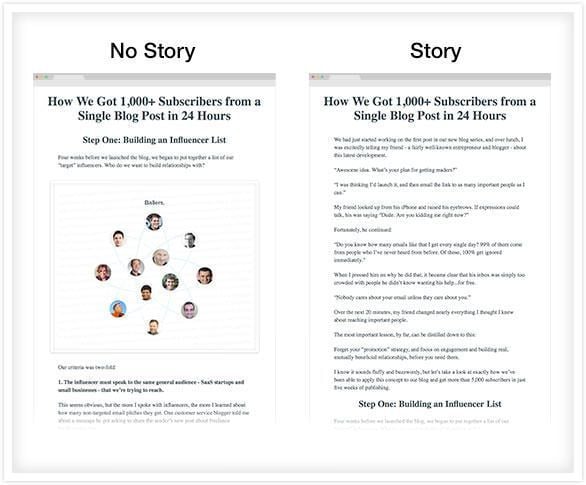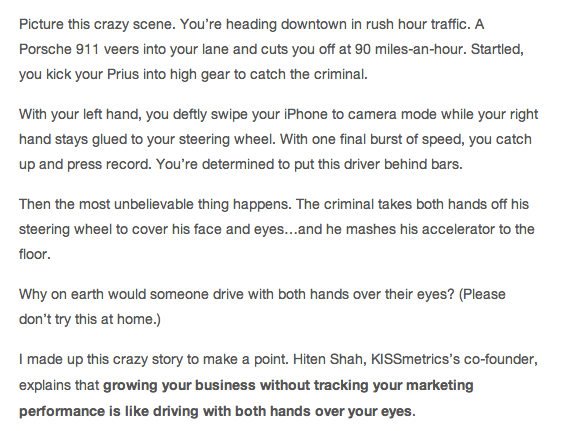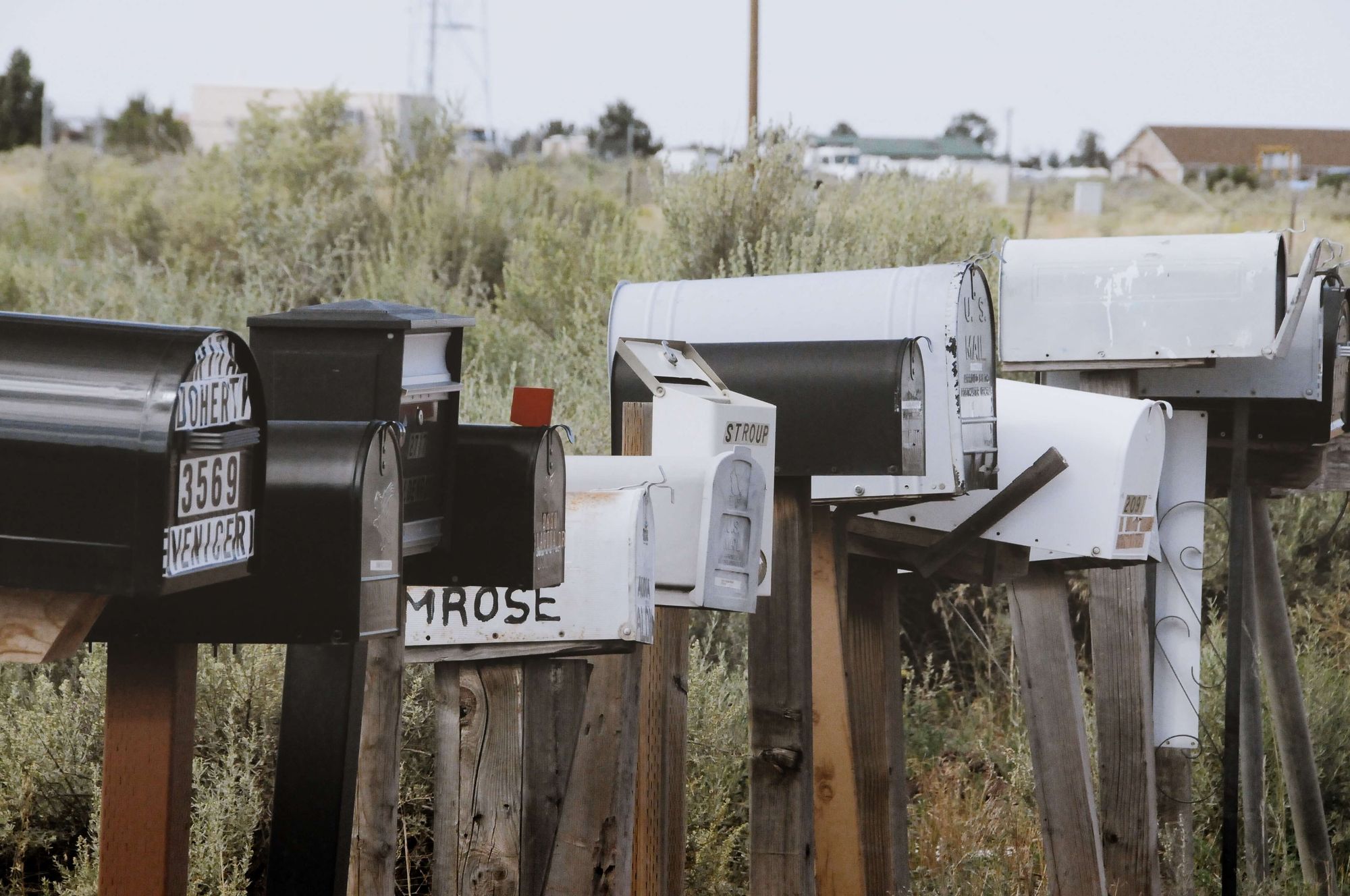The Power of Storytelling: How We Got 300% More People To Read Our Content

Imagine that you’ve written a blog post that can help thousands of people solve a really painful problem.
You’ve written the post, edited it, looked it over a few times to make sure that you didn’t miss anything important, and hit ‘publish.’
You send the post out to your list, share it on all of your social networks, and settle in to see what happens.
And then…
Nothing.
Sure, you get some traffic. Maybe even a comment or two. But nowhere near the level of response that your breakthrough problem-busting content should be getting.
It’s disappointing. And it happens to a lot of us.
The problem is that valuable content isn’t nearly enough.
The power of story
Your valuable content is a vitamin. You know that if you could just get people to take it, they’d be healthier and more successful. But no matter how hard you try, many people can’t be convinced to swallow vitamins. They don’t taste good, and they’re not fun to take.
Vitamins may be what we all need, but candy is what we want. So what can we do?
Think of your awesome, valuable posts as gummy vitamins. They deliver what your audience wants, as well as what they need.
The vitamin part is your value. That’s the problem that your post solves, or the benefit that it delivers. And the gummy part is the story. That’s what makes your content easy — and fun — to swallow.
Great content needs both parts to be successful.
A word of warning: don’t feed your readers candy. That is, fluffy, feel-good “10 tips for…” posts that are fun to read but do little to actually help them succeed in the long term.
They deserve better.
What happened when we tested this
If we actually tested the power of story, what would happen?
We decided to find out.
So for one of the blog posts on our Journey to $100K blog — about the steps we took to get more subscribers — we ran a basic A/B test.
Some of our visitors were sent to a version of the post that started with a simple story that led into the “meat” of the content, while others found a post with a no-nonsense intro that jumped right to the point.

The result?
The post with the narrative intro had nearly 300% more people scroll all the way to the bottom, and average time on page was more than five times higher!

Remember: in terms of pure “value” to the reader, these posts had EXACTLY the same content!
Why stories work
Digging into why the test results were so dramatic, we learned that there’s some really interesting science at play here.
When we hear information-–for example, a/b test results—we activate the part of our brain responsible for processing language. All we’re doing is taking in the words and figuring out what they mean.
But when we hear stories, our brain acts as if we’re feeling the stories.
In one study at the University of Washington in St. Louis, researchers studied people’s brain activity while they read a story about a boy named Raymond.
What they found was amazing: when Raymond picked up an object, the neurons responsible for hand movements in the participants’ brains fired. And when Raymond looked at what was around him, the neurons related to vision fired, too.

When we hear stories, our brain acts as if we’re living them.
So when marketers say that stories engage your readers, it’s not fluff; it’s psychology, and it’s incredibly powerful.
Five tips for setting the scene in your next post
I’m not a writer in the traditional sense. I don’t have the training or the skill to write powerful, enchanting prose that grips readers for hours.
But I don’t have to be. It doesn’t take a whole lot to set the scene in your blog.
It doesn’t need to be an epic tale. Ordinary, everyday scenes can pull the reader in, simply by being relatable.
1) Lead with dialogue
A lot of the lessons we learn at Groove come from conversations we have with each other and people outside of the company. Using those conversations as the starting scene for our blog posts helps readers feel like they’re in the room, learning along with us.
Sonia Simone, content marketer extraordinaire at Copyblogger, does the same:

2) Make something up
No, don’t lie to your readers.
But a fictional story can be every bit as compelling as a true one, if it makes your message more interesting.
Nemo Chu at KISSmetrics builds up a captivating scene to help readers understand an important metaphor about growth:

Without the story, the metaphor risks sounding like a business cliche. But by putting the reader in the driver’s seat, Chu’s story makes an impact.
3) Focus on emotions
As the research shows, readers connect most deeply to stories that relate to senses: sight, touch, taste, feel and smell.
Using those to guide the way you tell a story can create a powerful emotional connection between you and your audience.
In his Inc.com post, Jeff Haden vividly describes the scene as he and his client take a trip:

Jeff could have said “When we left the meeting, we noticed a buffet and some workers, but nobody was eating.”
Instead, he painted a picture with his words, describing the color of the staff’s uniforms and the tone of the employee’s voice. In return, we (the readers) are with him until the end.
4) Anchor to a story people already know
Incorporating a story in your content doesn’t necessarily mean you have to create one yourself.
There are lots of stories that your readers already know and remember, and you can tap into those memories to illustrate your point.
For example, look at how Magdalena Georgieva uses Fight Club — a movie almost all of us know and love — to teach HubSpot readers marketing lessons.

You can pull stories from just about anywhere: movies, TV shows, books, current events, fables or history, just to name a few.
5) Use a picture
Images can tell stories and capture a reader’s attention just as well as words. Stay away from business-y stock photos, though, and stick to something your readers can relate to.
At Groove, we love using stills from shows that we (and our audience) love, like Breaking Bad:

Note that your images don’t necessarily have to have anything to do with the subject of your story, as long as they convey the emotion you’re trying to get across.
One great place to look for Creative Commons-licensed images is flickr.
Try it for yourself
Try any (or all!) of the techniques above in your next blog post to harness the power of story.
You’ll engage your readers and deliver more value than simple bullet point lessons could ever offer.
Just remember: No candy. Ever.
Image credits: Toms Bauģis, Washington University St. Louis
Try Buffer for free
140,000+ small businesses like yours use Buffer to build their brand on social media every month
Get started nowRelated Articles

Sending ads by mail may seem like a thing of the past, but this marketer thinks it’s a surprisingly effective approach for e-commerce brands.

Learn how to leverage AI social media content creation tools and save valuable time in your social media marketing efforts.

With the newsletters on this list, you'll be able to stay on top of all developments in social media and learn from amazing experts